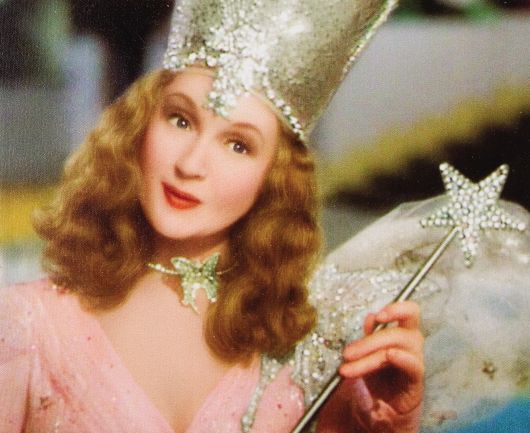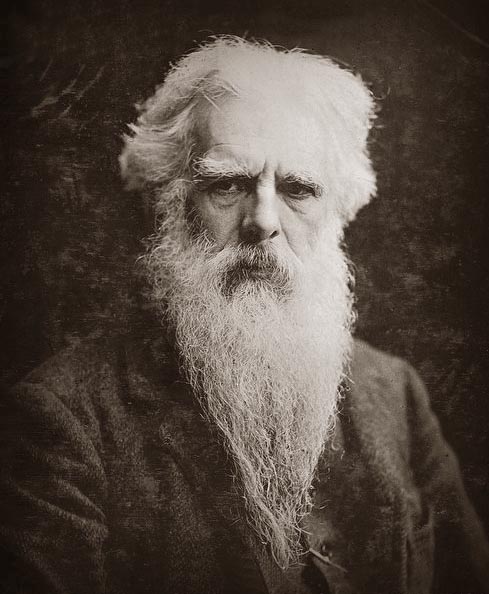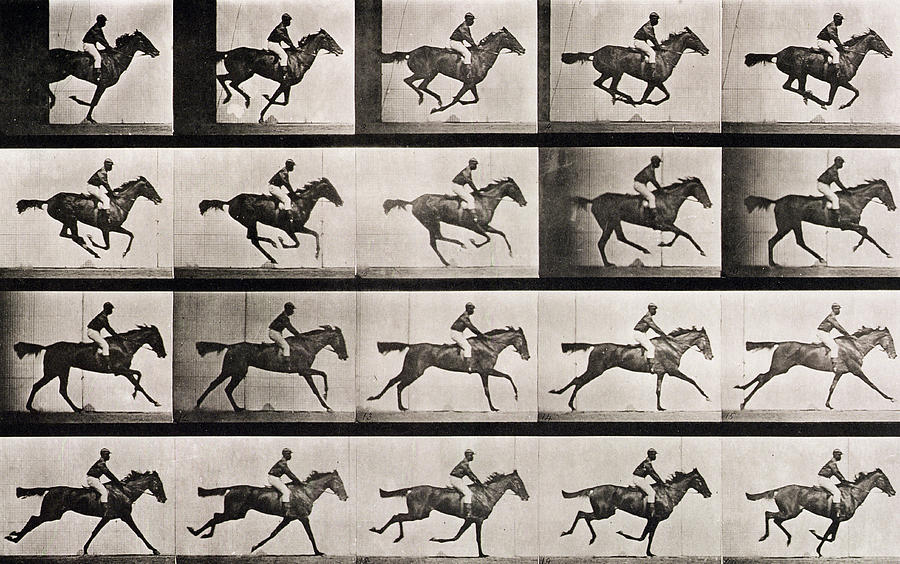Unrememebered History
The Introduction of Mrs. Claus is a Real Tearjerker
By Ken Zurski
“The Christmas Legend” is a short story written in the mid-nineteenth century by a Philadelphia missionary named James Rees. It tells the tale of a destitute American family that receives an unexpected visit from a couple of strangers on Christmas Eve. The constructive narrative sets up a deep exploration of family, loss and forgiveness; a classic Christmas formula. But the story itself is not widely known. In fact it would likely be completely forgotten had it not been for one word- “wife.” Today, it is cited as being the first time Santa Claus was associated with a spouse. It literately introduced the character we know now as Mrs. Claus.
Published in 1849, “The Christmas Legend” was part of a collection of 29 short stories written by Rees and compiled under the title, “Mysteries of City Life, or Stray Leaves from the World’s Book.” Each story is cleverly presented to represent the dissimilarity of many leaf types. For example, the maple leaf, Rees writes, is “golden and rich” and presents a sunnier disposition, while another like the gum tree leaf has a “bloody hue” and “stands fit emblem of the tragic muse.” He likens authors after the “forest trees” which “send forth their leaves unto the world.”
“And by what emblem shall we appear amongst those clustering trees,” Rees explains. “Let us see – Ah! The Ash Tree leaves are like ours, humble and plain to see, but hiding the silver underneath.”
In “The Christmas Legend,” Rees uses the spirit of the holiday to emphasis this point.
Here is the abbreviated story…
A family of four, mother and father, daughter and son, are sitting near the fireplace on Christmas Eve. The two children, especially the daughter, wonders if she should hang the stockings for Kris Kringle to come. But her mother raises doubt. There are more important things in life than earthly possessions, she states: “Poverty keeps from the humble door all the bright things of the earth, except virtue, truth and religion, these are more of heaven and earth, and are the poor man’s friend in time of adversity.”
“I thought that Santa Claus or Kris Kringle loved all those who are good, and haven’t I been good?” the daughter asks confused.
The mother tells her to leave the stocking up. “Customs at least should be observed, and perhaps the young heart may not be disappointed,” she explains.
The father is more introspective. He anguishes over a lost family member, the eldest child, another daughter who apparently ran away with a “dissipated” man seven years before and hasn’t been seen or heard from since.
Then there is a knock at the door.
Two strangers appear out of the night, an elderly couple carrying a bundle with “all their worldly wealth.” They ask how far away they are from the city and the father tells them it is “two miles.”
“Two miles?” the stranger says sadly, “we will not be able to reach it tonight. My dear wife is nearly tired out. We have traveled far today.”
The father invites them in and offers his best bed for them to rest. The strangers inquire if this is their whole family. “No. No,” the father says, “we had one other – a daughter.”
“Dead; Alas we all must die,” the old woman responds.
“Dead to us,” the man answers. “But not to the world. But let us speak of her no more. Here is some bread and cheese, it is all poverty has to offer, and to it you are heartily welcome.”
There is a silent pause, then the sound of cheerful merriment, music and laughter, is heard through the open windows and doors. It’s their rich landlord, the father explains, mocking the poor. The old man interjects. “Ah, sir, human nature is a mystery, this is one of the enigmas, and can only be explained when the secrets of the hearts be known.”
The next morning, Christmas Day, the family awakes to find their small room filled with presents: books and games and toys. “O Father, Kris Kringle has been here,” the little girl says excitedly. “I am so happy.”
Here Rees as the narrator sets up the moral of the story. “There are moments when the doors of memory and the bright sunshine of hope make the future all clear,” he writes. “Sorrow is not eternal; it has its changes, its stops; its antidote; they came in the moment of trial and – Presto! The whole scene of life is venerated in the pleasing colors of fancy.”
And that’s when something totally unexpected occurs. The old couple reappears to the family not as as they came, but as a vibrant young couple. The children recoil from fright, but the parents are curious. “How is this?” the father asks. “Why these disguises —“
“Hush, sir,” the once old man says laughing. “This is Christmas morn and we now appear to you not as Santa Claus and his wife, but as we are, the mere actors of this pleasing farce.”
The couple recognizes the old woman’s new face. It’s their long lost daughter. The girl hugs her mother, but the father is more skeptical, angry and weary of atonement. He lashes out at the girl as she approaches him. “Stand back!”, he shouts, then chastises the man who stands with her as a “paramour.” She begs him to reconsider. “No Father he is my kind and affectionate husband.”
“Ah, husband,” the father replies. He reaches for his daughter. They embrace.
Rees goes on to explain the girl ran away because she was “young and foolish” but loved the man who was forbidden from her home. They left America for England where her new husband became heir to a large estate. She sent letters home, but they were never received. Now she had returned back to her family on Christmas Day. A gift of love and hope. “Can you forgive me?” she asks.
“Say no more, all is forgotten. All is forgiven,” the father tells her.
Even though it is thinly defined, the mention of Santa Claus’s wife in “The Christmas Legend” is widely considered the first ever to appear in print. Two years later in 1851, the name Mrs. Santa Claus would be mentioned again in a story published in the Yale Literary Magazine. History tells the rest.
Today Mrs. Claus is considered a kindly old woman who helps her husband on Christmas Eve, tends to his colds, stitches his clothes, and feeds his “round belly,” usually with homemade cookies and milk.
“There are many interesting facts both historic and fabulous connected with the ceremonies, customs and superstitions of this day [Christmas], which if collected together today would make and curious and interesting book.” Rees explains in the introduction to his tale.
Apparently, he added to that.
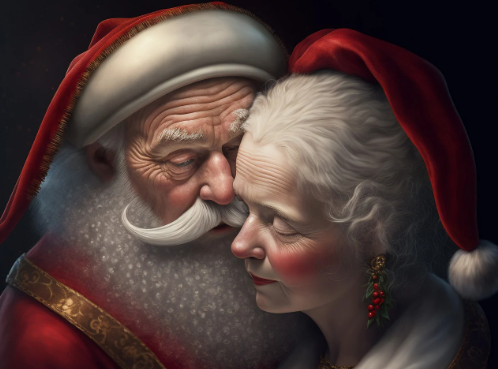
A Brother’s Lamentation
By Ken Zurski

On April 15 1865, the day after President Lincoln was struck down by an assassin’s bullet, Edwin Booth, a popular stage actor in New York, was told his younger brother John had pulled the trigger.
Edwin was appearing in a “successful” show at the time and immediately asked that it shut down. “The news of this morning has made me wretched,” he wrote, “not only because of my brother’s crime, but because a most justly honored and patriotic ruler has fallen.”
Edwin and his brother were estranged. Politics and ideology had separated them, as it did the rest of the country. “When I told John I voted for Lincoln,” Edwin recalled, “he expressed deep regret.”
Edwin feared for his own life after news that another brother, Junius, also an actor, had been threatened by an angry mob in Cincinnati. “Whatever calamity may befall me and mine, my country, one and indivisible, has my warmest devotion,” Edwin explained before going into hiding.
In January the following year, friends urged him to return to the stage. He reluctantly agreed. As his favorite character, Hamlet, Edwin stepped in front of a packed theater.
He was greeted by a tremendous applause.

Wash Your Hands? In the 19th Century it was ‘Please Take a Bath’
By Ken Zurski

In 1902, psychologist and chemist, William Thomas Sedgwick released a book titled Principles of Sanitary Science and Public Heath which was a compilation of lectures he gave as a professor of biological sciences at MIT. In it, Sedgwick extolled the virtues of good personal hygiene to keep infectious diseases away. “The absence of dirt,” he urged, “is not merely an aesthetic adornment.”
Basically, he was telling everyone to clean up. In essence, please take a bath.
Sedgwick was onto something. Until then taking a bath, for example, was an option most people chose to ignore. That’s because for centuries, cleanliness was seen as a sign of weakness or impurity. In some ancient religious philosophy’s, being wet, or letting the water touch you, was akin to allowing the devil enter your body. And in other circles, bathing was considered a sign of sexual mischievousness. Queen Isabella of Castile bragged that she took a bath only twice in her life, on her birth day and her wedding night. And Saint Benedict, an English monk who lived a solitary and monastic life, said “bathing shall seldom be permitted.”
Of course that was a long time ago when attitudes were based on god fearing principles, not logic. But even at the turn of the 20th century, personal hygiene was still somewhat taboo.
Sedgwick though wasn’t the first to encourage others to get well by getting clean. Benjamin Franklin, a man of many titles, was also an early advocate of good hygiene habits.

As America’s first diplomat in France, Franklin thoroughly enjoyed the pleasures of taking a bath, a European luxury, although his desires may have been influenced more by the pretty French maids who administered it. “I have never remembered to have seen my grandfather in better health,” William Temple Franklin wrote to a relative. “The warm bath three times a week have made quite a young man out of him [Franklin was in his 70’s at the time]. His pleasing gaiety makes everybody love him, especially the ladies, who permit him always to kiss him.” Regardless of his reasons for actually taking a bath, Franklin couldn’t help but get clean, right?
However, when a large tub of warm water wasn’t present, Franklin liked to take what he called “air baths.” Franklin thought being inside and cooped up in a germ infested, walled, and shuttered space, was the reason he got colds. So to keep from getting sick, Franklin would open the windows and stand completely naked in front of it. Ventilation was the key to prevention, he explained, although others likely weren’t so emboldened.
In the mid 19th century, bathtubs were heavy and costly and those who could afford it used it as much for decoration as for its intended purpose.
Before indoor plumbing, a large tub may have been made of sheet lead and anchored in a box the size of a coffin. Later bathtubs became more portable. Some were made of canvas and folded; others were hidden away and pulled down like a Murphy Bed. They were called “bath saucers.”
It wasn’t that most people didn’t understand the merits of taking a bath. It was just a chore to do so. Water had to be warmed and transported and would chill quickly; then dumped. Oftentimes families would use the same bath water in a pecking order that surely forced the last in line to take a much quicker dip than the first.

In the later half of the 19th century, as running water became more common, bathtubs became less mobile. Most were still bulky, steel cased and rimmed in cherry or oak, but stationary. Fancy bronzed iron legs held the tub above the floor.
Ads from the time encouraged consumers to think of the tub as something other than just a cleaning vessel. “Why shouldn’t the bathtub be part of the architecture of the house?” the ads asked. After all, if there is going to be such a large object in the home, it might as well be aesthetically pleasing.
Getting people to actually use it, however, that was another matter.
Sedgwick had medical reasons to back up his claims. As an epidemiologist, he studied diseases caused by poor drinking water and inferior sanitation practices. Good scientific research, he implied, should be all the proof needed. But attitudes and decades old habits needed to change too. “It follows as a matter of principle,” Sedgwick wrote, “that personal cleanliness is more important than public cleanliness.” He had a point. Largely populated cities were dirty messes, full of billowing black smoke from factories, coal dust, and discarded garbage and waste. Affixing blame for such conditions was more popular than actually doing something about it. Sedgwick focused on self-awareness to make his point. “A clean body is more important than a clean street,” he stressed.”Sanitation alone cannot hope to effect these changes. They must come from scientific hygiene carefully applied throughout long generations.”
People, it seemed, had to literally be scared into taking a bath.
Something Sedgwick understood, but fought to amend.
“Cleanness,” he wrote in concession, ”was an acquired taste.”
Hershey’s Chocolate Challenge
By Ken Zurski
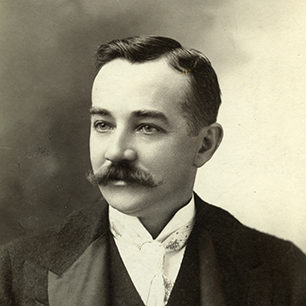
In 1903, candy maker and entrepreneur Milton Hershey invented a recipe for milk chocolate that he planned to sell en mass to Americans.
Hershey certainly did not discover the benefits of chocolate (which dates back to the Aztecs in 450 BC) or the first chocolate bar for that matter (a cocoa butter based solid used by the Dutch in the early 19th century), but what he did do is mass produce it.
Hershey had successfully opened up a caramel factory in Lancaster, Pennsylvania, but producing chocolate in large quantities proved to be a major challenge. The problem was in the process. Specifically, how does one heat sugar and milk in large kettle pots without burning the mixture or making a sticky goo?
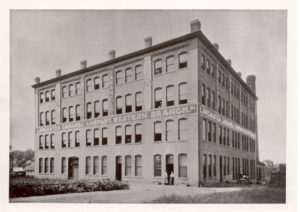
Hershey and his team worked for hours, day thru night, trying to figure it out. They experimented with less ingredients, then more. They tried whole or skim milk. They even changed the breed of the cow hoping for better consistency. Nothing seemed to work. Every experiment they tried met with the same result: lumpy, burnt residue – not creamy delicious chocolate.
Hershey knew financially millions of dollars were at stake. So he hired a chemist. But even that failed. Desperate, Hershey called on a trusted worker at the caramel factory to give it a go. The worker had an idea. He focused on the cooking rather than the mixing. He combined the milk, sugar and other ingredients and adjusted the temperature; slowly cooling it down then heating it up again to reduce boiling and burning.
It worked.
“Look at the beautiful batch of milk,” Hershey exclaimed.
Not only did the new batch taste good, but it was creamy and smooth too.
Inspired by the new process, Hershey decided to produce larger pieces to sell.
Instead of small bites, like “kisses,” Hershey envisioned a chocolate piece that was longer and offered multiple bites in one.
He called it the Hershey Bar.

(Sources: Hershey: Milton S. Harshey’s Extraordinary Life of Wealth, Empire, and Utopian Dreams – Michael D’Antonio; various internet)
In His Own Magical Way, Walt Disney Transported People Into Space
By Ken Zurski
Seven years before President John F. Kennedy announced intentions to put a man on the moon, Walt Disney, in his own magical way, was doing just that. Not physically of course, but imaginatively.
Disney-style.
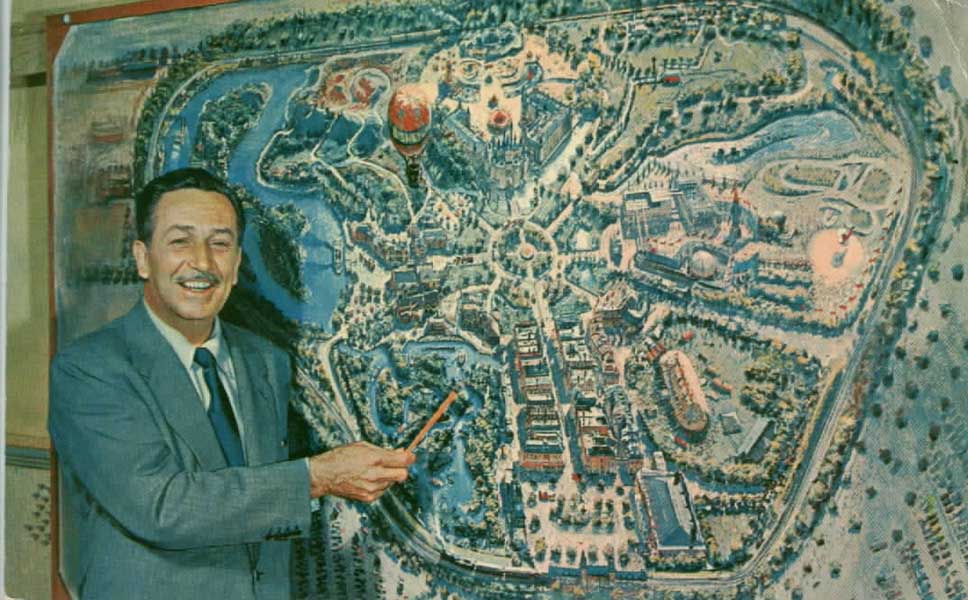
It started in July of 1955, when Disney’s visionary theme park Disneyland opened in Anaheim, California. Inside an area dubbed “Tomorrowland” was an 80-foot rocket named the “Moonliner.” It’s purpose was for show, but it’s intent was far-reaching. This was “tomorrow’s” transport and the goal: space travel.

The exhibit was sponsored by Trans World Airline (TWA) with a promise that the air carrier “would send passengers to the moon in 30 years” [That would be 1985 back then]. Rocketing along at flight speeds of 172 mph, TWA claimed the trip would take about eight hours. Next to the rocket was a multi-sphere building and a sign that read: “Rocket to the Moon.”
At the base of the rocket was an explanation: “Stabilized in flight by gyroscopes, it would be controlled by automatic pilots and magnetic tapes. Landing tail-first, no air-foils or wings would be necessary, its vertical descent controlled by its jets. The 3 retractable landing legs would be equipped with shock absorbers. Launching and landing would be done over a “firing center” to confine and lead off the superheated exhaust gases.”
Inside “Rocket to the Moon,” thanks to a projection screen both on the ceiling and on the floor, park guests could experience this flight themselves – or at least a simulation of it. “You don’t actually land on the Moon, but you get to fly around the back side of the Moon,” was the ride’s description. “Along the way, you learn interesting facts about the Moon and the planets. Soon you’re heading back to Earth. After your craft turns around, you see your destination on the floor screen. Prepare to land.” The total duration of the ride was about ten minutes.
Disney himself explained it this way: “Kids and grown-ups too can take a trip to the moon from here. Well, at least they can board a passenger rocket and have all the thrills of such a trip – and in accord with the latest scientific theories on interplanetary travel.”
Yes, “scientific theories,” is how Disney put it in 1955.
He added: “Timid souls who don’t care to risk outer space can peer at the U.S. from an inner space, man-made satellite orbiting 500 Disney miles above the earth.”

In 1961, TWA dropped its sponsorship and Douglas Aircraft took over the”Moonliner.” The rocket was repainted to represent Douglas Aircraft’s color and brand. It lasted until 1966, when it was shut down and the building demolished. By this time the prospects of a moon flight was in reach. “We choose to go to the moon in this decade and do the other things,” President Kennedy famously said in September of 1962, “not because they are easy, but because they are hard.”
In 1967, the ride was rebuilt, adding more amphitheater rooms and more seating. A pre-show lobby was redesigned and featured the park’s animatronic figures. Gone was the “Moonliner” rocket, or as one Disney historian described: “It had been scrapped.”
The exhibit was given a new name: “Mission to the Moon.”

Then in July 1969, millions of Americans watched as a man walked on the moon. “One small step for man, one giant leap for mankind,” astronaut Neil Armstrong proudly proclaimed upon making the first footprint. Suddenly, Disney’s futuristic moon ride was no longer “tomorrow’s” fantasy.
“First Think. Second, dream. Third, believe. And finally, dare,” Disney once said, although he wouldn’t live long enough to witness man’s first flight to the lunar surface. He died in 1966 at the age of 65.
The ride stayed open through all six manned Apollo Missions. Finally, in 1975, the name changed again. This time passengers were still going into space, but now they would travel further than the moon and certainly farther than any man so far.
“Mission to Mars” opened in March of 1975.
The ride closed for good in 1992.

Ask Your Local Library to Add UNREMEMBERED!
Ask your local library to get it …give the book title and the author. Available on Ingram, Baker & Taylor and Amazon http://a.co/d/iteJoll
Ken Zurski, author of The Wreck of the Columbia and Peoria Stories, provides a fascinating collection of once famous people and events that are now all but forgotten by time. Using a backdrop of schemes and discoveries, adventures and tragedies, Zurski weaves these figures and the events that shaped them into a narrative that reveals history’s many coincidences, connections, and correlations.
We tumble over Niagara Falls in a barrel, soar on the first transcontinental machine-powered flight, and founder aboard a burning steamboat. From an adventurous young woman circumnavigating the globe to a self-absorbed eccentric running for President of the United States, Unremembered brings back these lost stories and souls for a new generation to discover.

John Alcock
Nellie Bly
Isambard K. Brunel
Samuel Cunard
Nathaniel Currier
Annie Edson Taylor
Ruth Elder
William Harnden
Father Louis Hennepin
Dorothy Kilgallen
Samuel Langley
Bobby Leach
John Ledyard
Thomas Moran
Catherine O’Leary
William B. Ogden
Fanny Palmer
Sam Patch
Rembrandt Peale
Cal Rodgers
Amos Root
Janet Scudder
George Francis Train
Cornelius Vanderbilt
Arthur Whitten Brown
John Wise
Victoria Woodhull
Recognize this Actress? You Might be Surprised.
By Ken Zurski

A veteran of stage and screen, Billie Burke began her Broadway and film acting career in 1906 at the age of 22.
She appeared in numerous stage and screen roles (silent films) and in 1914 married another show business impresario , Florenz “Flo” Ziegfeld Jr, of Zeigfeld Follies fame.
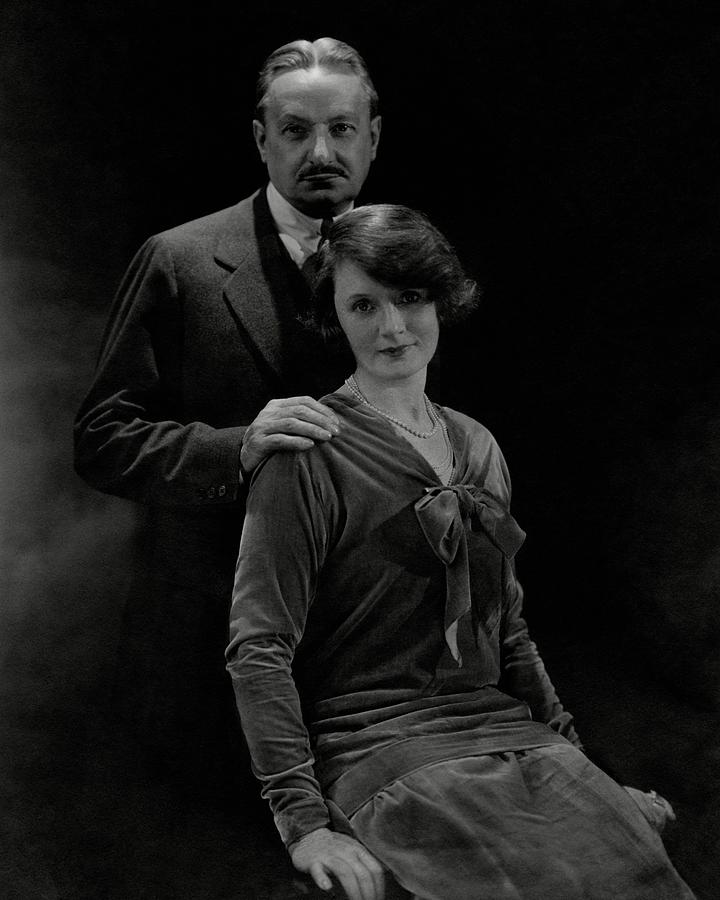
In 1921, Burke retired from performing thanks to a boon in the stock market and good investments.
However, in 1929 after the Black October crash, the money was gone.
Burke went back to work appearing with many top Hollywood heavyweights like Lionel Barrymore whom she co-starred in the most acclaimed and defining role of her career: Millicent Jordan, the “hapless, feather-brained lady with the unmistakably high voice,” in 1933’s “Dinner at Eight.”

Although it wasn’t her last appearance in the movies, in 1939, at the age of 54, Burke played a character for which she is most remembered today…
Glinda the Good Witch of the North in “The Wizard of Oz.”
